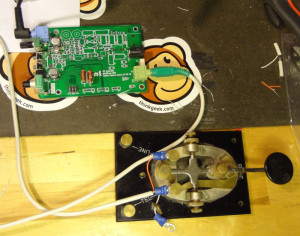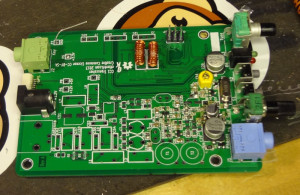Using Audacity, I was able to finally get a decent recording of the whining noise that my CC1 is making (the recording isn’t very loud so you might have to turn the volume up).
The audio clip starts with CC1’s startup message (“CC1”) followed by the whining noise, and then the Morse code readout of the frequency and then more whining. Of interest I think is that the whining is muted when CC1 is playing the dits and dahs. Not sure if that says anything about where the source might be.
Using Audacity’s frequency analysis tells me the main frequency of the whine is around 1300 Hz with second and third harmonics at around 2600 and 3900.

Still haven’t had much luck figuring out what’s making it, although Jason/NT7S has given me a few helpful tips. I need to check and make sure the BFO is oscillating and check to make sure there are no open circuits in the toroids. Haven’t found anything yet. Need to put CC1 back on the bench and have a closer look at everything.
While I was checking the signal paths through the toroids, I decided to go ahead and make some modifications to the IF filter suggested by Jason to improve the signal leakage. Didn’t expect them to have any effect on the whining, but I figured I’d make them anyway.
I’m enjoying this detective work trying to figure out what I did wrong with CC1. It’s almost as fun as putting it together.





